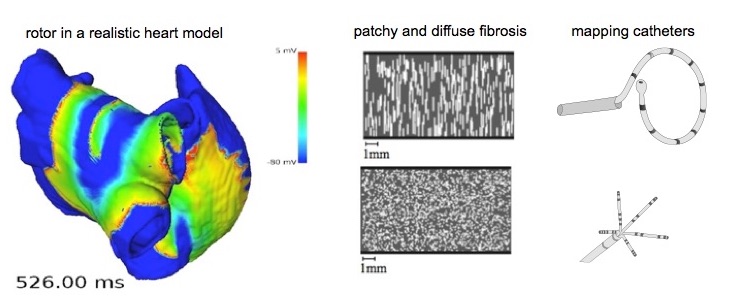Formation of intracardiac electrograms in case of different excitation waves and substrate modifications
- contact:
Atrial fibrillation (AF) is the most common arrhythmia and a risk factor for stroke. About 1% of the western population suffer from AF. The most common clinical treatment is the catheter ablation, a minimal invasive treatment. During the electrophysiological study intracardiac signals are meas-ured with multielectrode mapping catheters. With 3D navigation systems the signals and excitation waves are visualized on the heart geometry. The success of the ablation therapy is significant dependent on the identification of origins of AF and isolation of this regions is done with scars. But until today the mechanisms of formations of intracardiac signals are still not clearly understood.

This research project is focusing on understanding formations of intracardiac electrograms which orginate from different excitation waves and substrate modifications like different fibrotic patterns. Computer simulations of different excitations such as normal sinus rhythm, ectopic foci, rotors or different fibrotic offer the opportunity to analyze typical effects on the intracardiac signals. The development of methods to identify specific excitations waves and for estimation of parameters like the conduction velocity or the degree of fibrosis with various mapping catheters are main as-pects. Furthermore simulation studies are evaluated with clinical and experimental data.
Publications
- M.W. Krueger et al., Personalization of Atrial Anatomy and Elelectophysiology as a Basis for Clinical Modeling of Radio-Frequency-Ablation of Atrial Fibrillation. IEEE Transactions on Medical Imaging (31), 73-84, 2012
- G Seemann et al.. Electrophysiological modeling for cardiology: methods and potential applications. IT – Infor-mation Technology (52), 242-249, 2010

